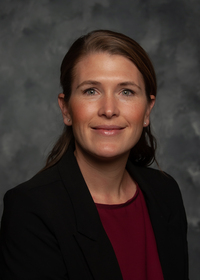Climate-Smart Commodities (CSC) Pilot Program Overview
What is climate-smart agriculture and forestry?
Carbon is constantly cycling between the soil and the atmosphere through plants, animals, and microbes. This means agriculture and forestry industries are uniquely situated to impact this cycle with low-tech, widely accepted management practices.
Climate-smart agriculture and forestry (CSAF) comprises management practices that mitigate greenhouse gas (GHG) emissions, enhance soil structure, and bolster resilience to climate change. These practices aim to reduce carbon loss from the soil and/or sequestering carbon from the atmosphere into soils.
The most prominent GHGs in the atmosphere include carbon dioxide, methane, and nitrous oxide. There are many agricultural practices that can reduce GHG emissions, including residue and tillage management (reduced or no-till), fallow season cover crops, prescribed grazing, nutrient management, enhanced fertilizer use efficiency, irrigation water management, and others. Many of these practices can improve soil health over time, providing benefits like increased storage of water in soils, greater infiltration and less runoff, and reduced soil erosion and nutrient loss.
Will CSAF practices impact my profitability?
Changes to management practices, like using reduced tillage, can have varied impacts on an operation’s profitability. Like any decision made throughout a growing season, care should be given when adopting new practices.
Financial incentives provided by USDA programs may help cover the cost of implementation, but these generally will not adequately offset a yield drag if management changes impact yield. Impacts to yield resulting from cover crop adoption are difficult to generalize, given a wide range of agronomic practices and experience around cover crop implementation, management, and termination.
Implementing soil management strategies to reduce GHG emissions can enhance soil structure, regulate nutrient and water cycling, and sequester carbon by increasing soil organic matter. This has the potential to enhance soil productivity, which may not necessarily increase yield. However, it can reduce the requirements for fertilizer and irrigation, such as enhancing soil water storage in non-irrigated systems, which can lead to higher net profits.
Will documenting GHG reductions or having a carbon intensity score result in a value-added premium for my cash crop?
Grains or other agricultural products, which have an associated GHG reduction, may be sold at a premium. The current approach to providing financial incentives to growers is through government programs for conservation practice adoption on a per-acre basis.
Climate-smart commodities (CSCs) allow the industry and their end customers a chance to support these practices through a premium. Individual consumers can voice their support for practices that make our agroecosystems more sustainable through the products they choose. Companies paying a premium for commodities may focus on reducing their GHG emissions within their own supply chain (insetting) to meet sustainability goals.
Many questions arise regarding CSAF practices and programs. An exhaustive list of practices sponsored through various programs is published by the United States Department of Agriculture, Natural Resources Conservation Service (USDA-NRCS). This suite of practices, along with other technologies, allow farmers to address resource concerns and invest in the long-term productivity of their land. Click here to access the list of CSAF activities.
What is the difference between carbon programs (offsetting) and carbon insetting?
Carbon markets have operated by trading emission reductions from one domain to another. The most prevalent types of carbon offsets have been generated by forestry projects that work to keep carbon dioxide out of the atmosphere by sequestering it in standing trees. The GHG benefit is then sold through an intermediary to a customer seeking to reduce their GHG footprint, where emissions generally have already occurred. Carbon insetting is making meaningful GHG emission reductions within a company’s supply chain, which means those benefits are directly related to the company’s good or service.
What would it look like if I were to sell CSCs?
Development is underway. Currently, the USDA has provided grants for several projects that explore what works and what doesn’t. As of now, a producer would be limited in selling a value-added, climate-smart product on the market, but this may change in the future.
Projects are examining how much a premium should be to cover the costs of implementing climate-smart practices. The projects also explore which practices are useful and for which cropping systems, and how producers can be rewarded for climate-smart practices through the market. In the future, premiums may be delivered on a GHG-emission-reduction basis; during the pilot program, financial incentives remain per acre. This would allow producers to choose the practices that create a GHG reduction and work well for their production system.
The CSC program has three main goals:
- Provide financial incentives to agricultural producers to implement approved climate-smart practices.
- Conduct independent monitoring and documentation of reduced GHG emissions for implemented practices.
- Develop premium markets by connecting CSCs to interested buyers.
What is the difference between the USDA pilot CSC program and traditional conservation programs like Environmental Quality Incentives Program (EQIP) and Conservation Stewardship Program (CSP)?
Pilot CSC Program
- This program is delivered through various third parties that receive funding from USDA-NRCS and would deliver financial and technical assistance through their separate entities.
- It serves various geographic regions and specific commodities and provides financial assistance for specific climate-smart practices that are nuanced to each pilot project.
- Contract lengths vary but are typically 1 year.
- CSC pilot programs do not have the same restrictions and are likely to vary based on the practices, commodities, and availability of financial assistance.
EQIP and CSP Programs
- These programs are delivered through local county NRCS and Farm Services Agency offices. There is direct collaboration with local county offices to determine eligibility, address resource concerns, develop a conservation plan, set up a formal contract, and receive payments for the adopted practice.
- Programs operate at a county level to serve all farm and forest operations and the respective acres.
- The length of EQIP contracts is typically 1 year, while CSP contracts are up to 5 years
- Specific application windows vary and are dependent on each state and region.
Note: It is important to consider if a farmer has an existing EQIP and/or CSP contract; they cannot contract with a pilot CSC program for the same practice, in the same year, and on the same tract of land.
If you would like to help explore the feasibility of CSCs while enhancing soil and water sustainability on your farm through conservation practices, find climate-smart projects in your area through the USDA. Click here for a list of CSC partnership projects.
The information given here is for educational purposes only. References to commercial products, trade names, or suppliers are made with the understanding that no endorsement is implied and that no discrimination against other products or suppliers is intended.
Publication 3991 (POD-05-24)
By Mark J. Hill, Extension Associate I, Edward D. Entsminger, PhD, Extension Associate III, and Beth Baker, PhD, Associate Extension Professor, Wildlife, Fisheries, and Aquaculture.
The Mississippi State University Extension Service is working to ensure all web content is accessible to all users. If you need assistance accessing any of our content, please email the webteam or call 662-325-2262.












